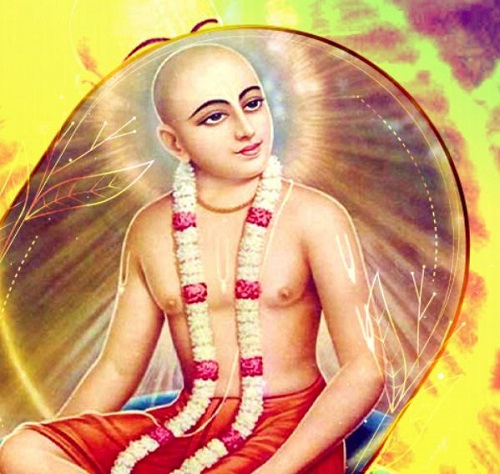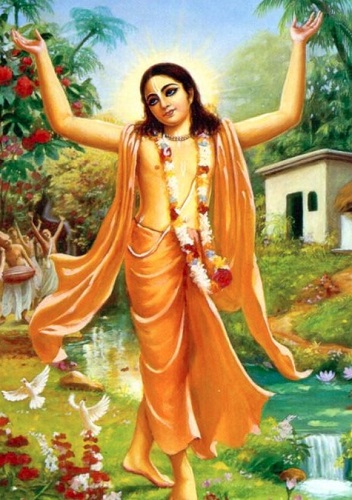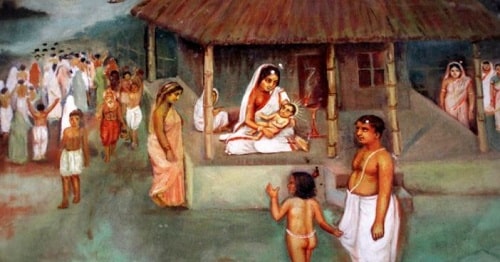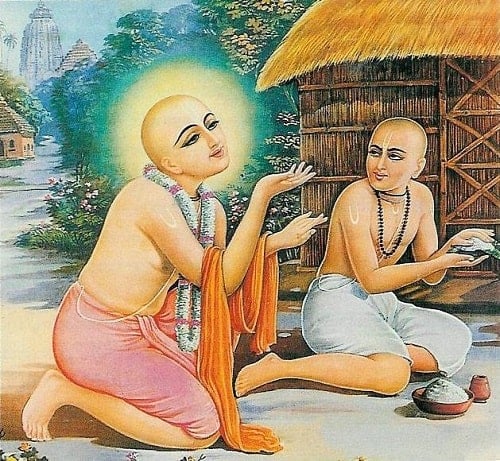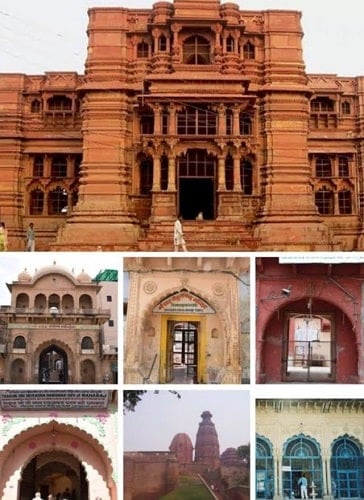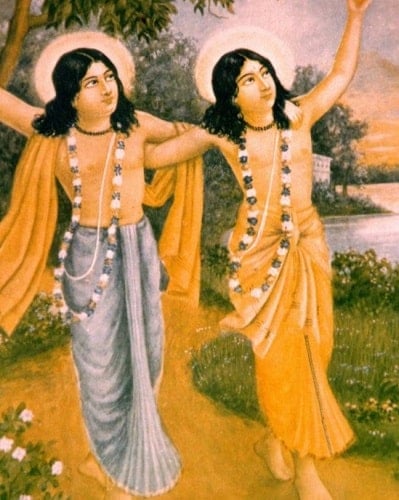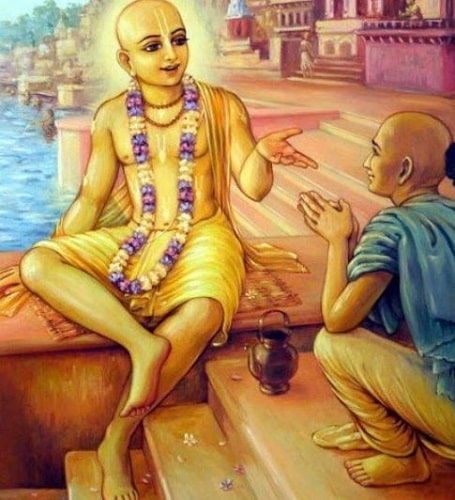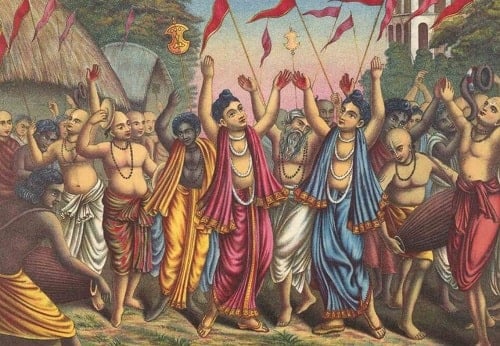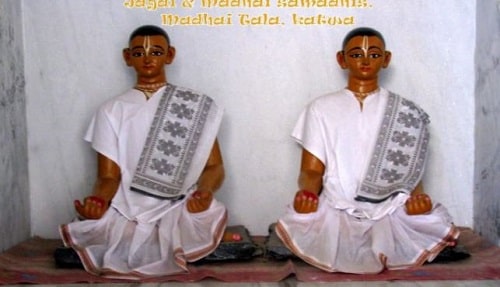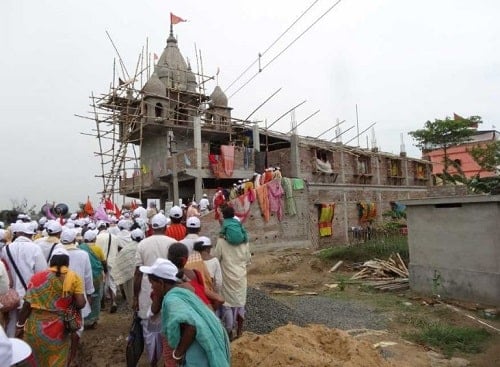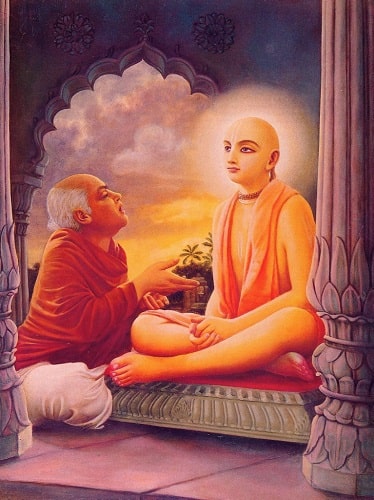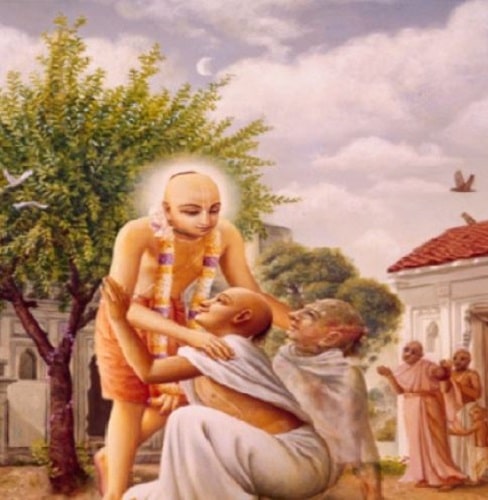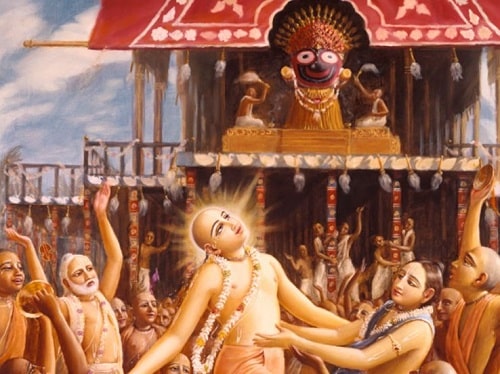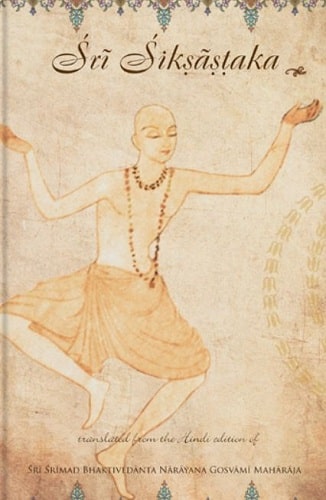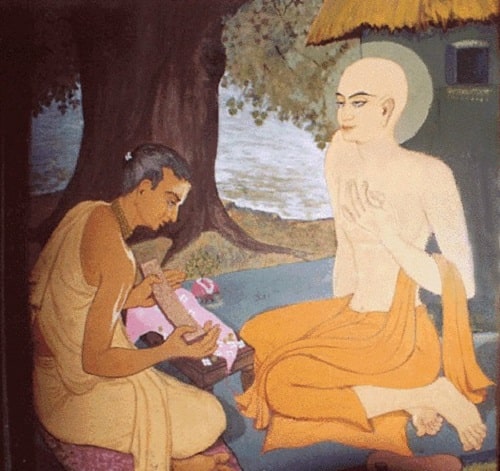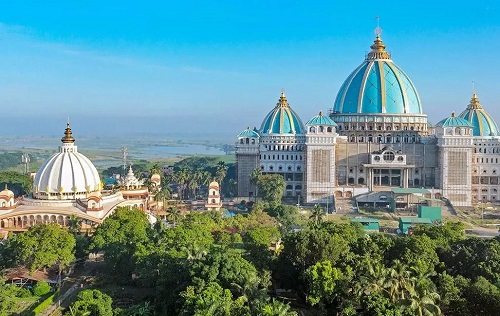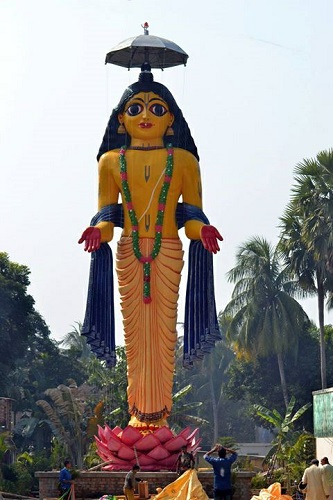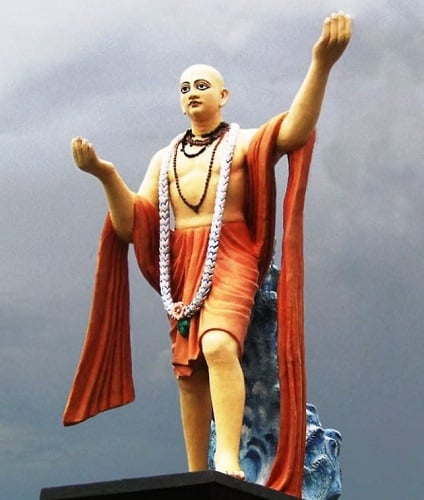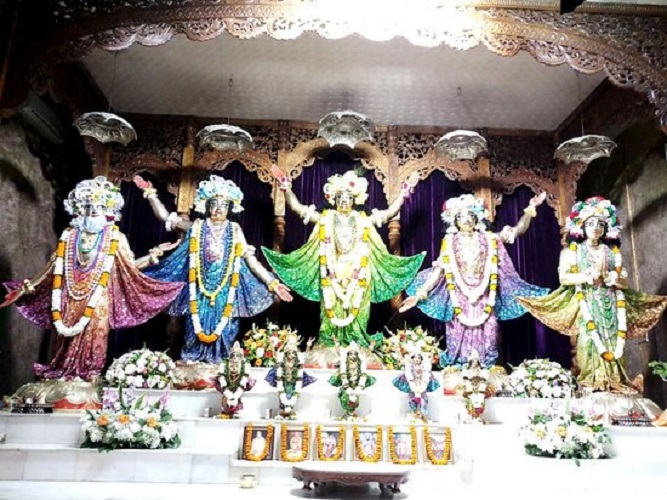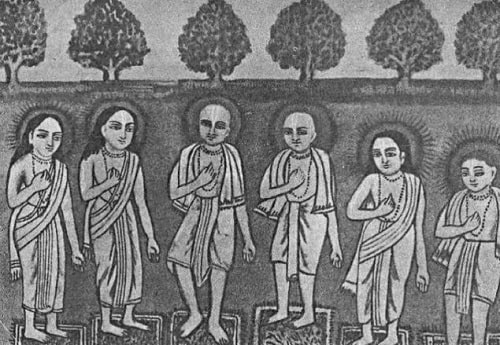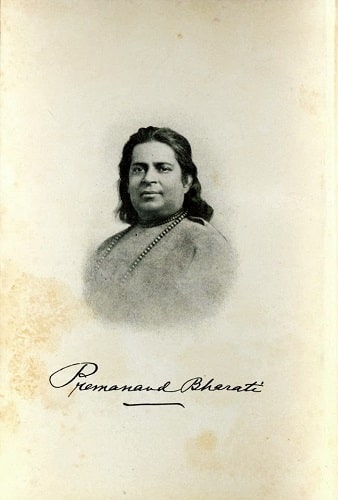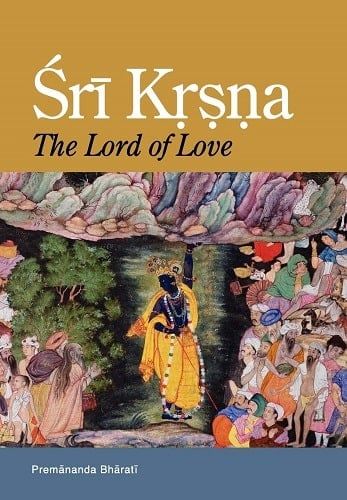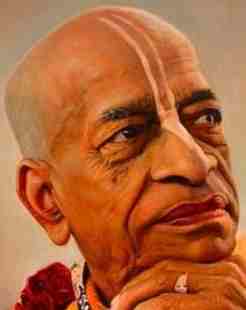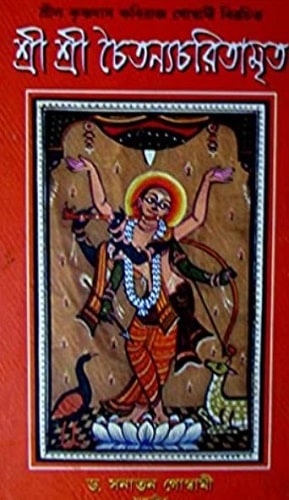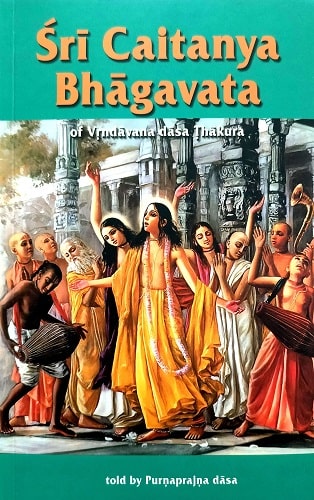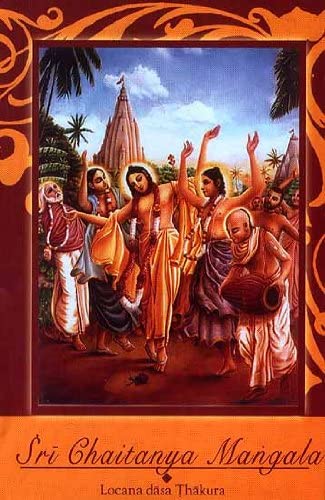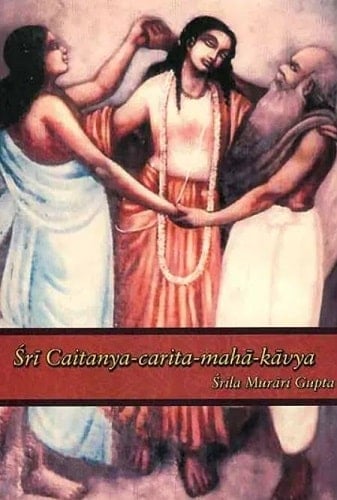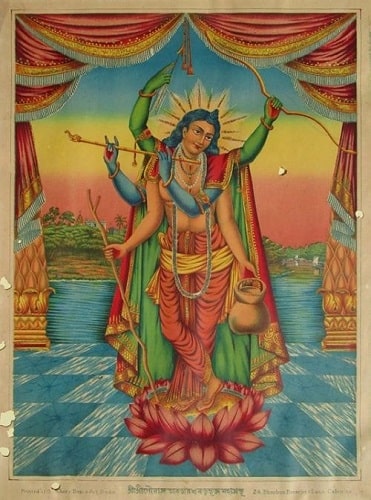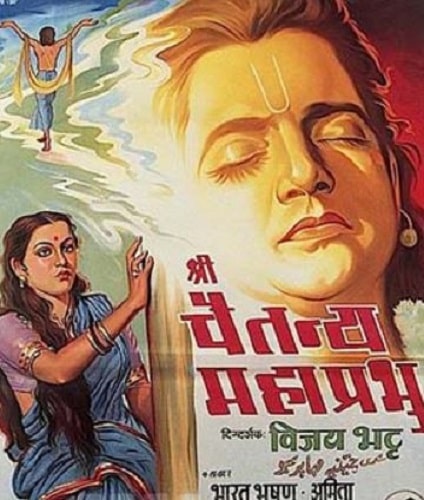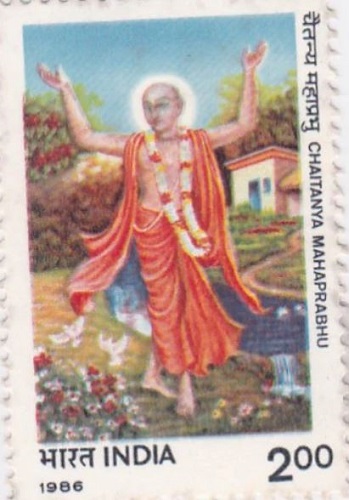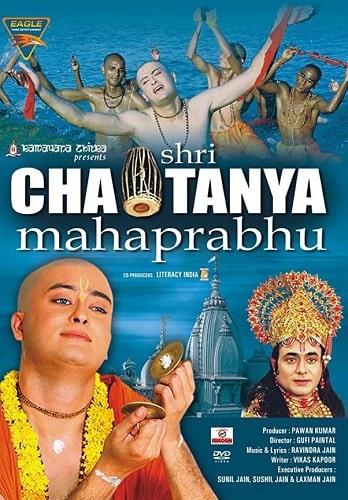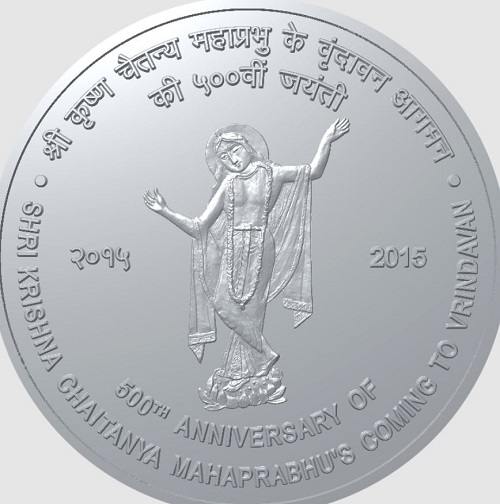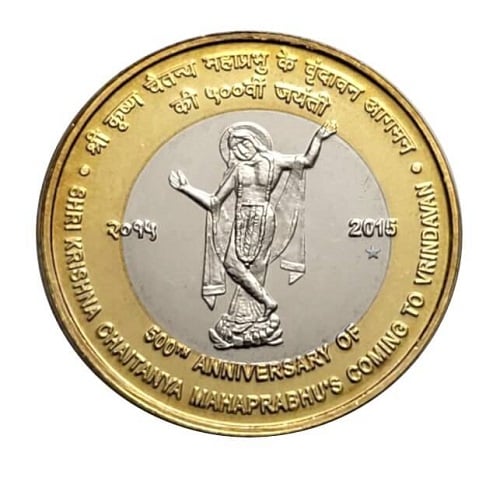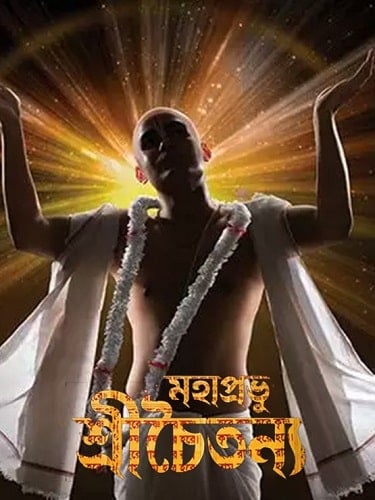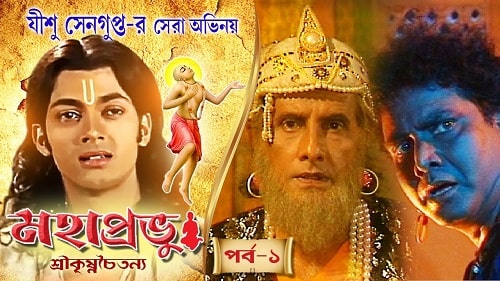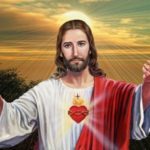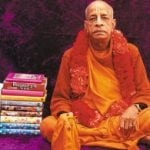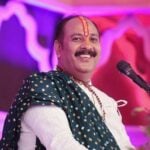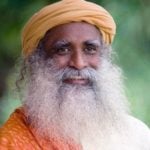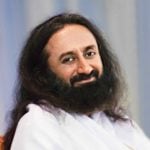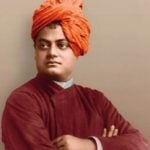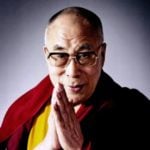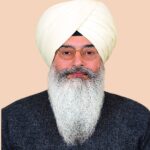Chaitanya Mahaprabhu Age, Death, Wife, Family, Biography & More
| Bio/Wiki | |
|---|---|
| Other name(s) | • Caitanya Mahaprabhu • Gaur or Gaur-Hari or Gauranga (for his fair complexion) • Nimai (as he was born underneath a Neem tree) [1]The Divine Life Society |
| Real name | Vishvambhar Misra [2]Jansatta |
| Profession | Saint |
| Personal Life | |
| Date of Birth | Source 1: 18 February 1486 [3]Bhakti Prasad Source 2: 4 February 1486 [4]The Divine Life Society |
| Birthplace | Nabadwip, Bengal Sultanate (present-day West Bengal, India) |
| Date of Death | 14 June 1533 |
| Place of Death | Puri, Gajapati Kingdom (present-day Odisha, India) |
| Age (at the time of death) | 47 Years |
| Death Cause | Disappeared [5]Sri Gauranga Ashram |
| Zodiac sign | Aquarius |
| Nationality | Indian |
| Hometown | Nabadwip, West Bengal |
| Religion | Hinduism [6]The Divine Life Society |
| Caste | Vaidik Brahmin [7]The Divine Life Society |
| Relationships & More | |
| Marital Status (at the time of death) | Although he underwent an arranged marriage, since becoming a sanyasi, he followed a complete celibacy. |
| Family | |
| Wife/Spouse | • First Wife: Lakshmipriya (daughter of a pandit named Vallabhachary; died of a snake bite)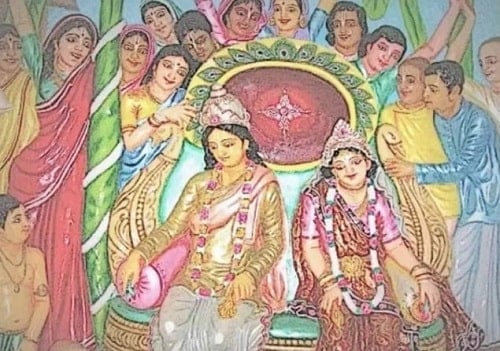 • Second Wife: Bisnupriya aka Visnupriya (daughter of the famous Pandit Santana of Nadia) 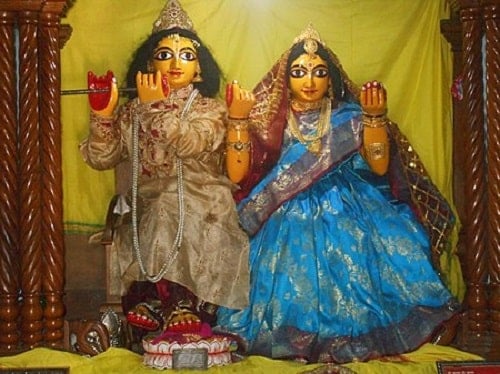 |
| Parents | Father- Pandit Jagannath Misra Mother- Sachi Devi (daughter of the Indian scholar Nilamber Chakravarti) 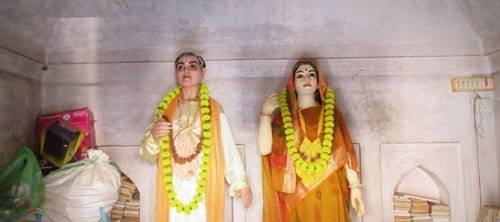 |
| Siblings | His eight elder sisters died shortly after their birth. His ninth sibling, a brother named Viswarup, joined a South Indian monastery at the age of 16, as he was compelled to marry against his will. |
Some Lesser Known Facts About Chaitanya Mahaprabhu
- Chaitanya Mahaprabhu was an esteemed Indian saint of the 15th century. He is believed to be the embodiment of the combined form of Lord Krishna and Radharani. [8]Krishna.org He established the religious movement called Gaudiya Vaishnavism and the school of thought known as Achintya Bheda Abheda within the Vaishnava tradition of Hinduism.
- He was born on the night of a full moon, beneath the shelter of a neem tree.
- At the school of the Indian philosopher Vasudeva Sarvabhauma, known for his expertise in Nyaya Shastra, Mahaprabhu studied navya nyaya or new logic. Under the guidance of his teacher Sudarshan, he also learnt the basics of Sanskrit. His education was completed under the mentorship of his guru Pandit Gangadas.
- While receiving education from his teacher Vasudeva Sarvabhauma, a notable writer named Raghunath noticed the exceptional intelligence of Mahaprabhu. Raghunath realised that Mahaprabhu possessed even greater intelligence than his own teacher. Raghunath had always aspired to be recognized as the most intelligent person in the world, but upon meeting Chaitanya, he began to fear his superior intellect. During this time, Mahaprabhu was working on a commentary on Nyaya, a branch of philosophy. Raghunath yearned to read Mahaprabhu’s commentary, but he doubted whether Mahaprabhu would be willing to share it with him.
- Eventually, while they were crossing a river in a boat, Raghunath mustered the courage to ask Mahaprabhu to show him his commentary. As Raghunath read through it, he realized that it was an extraordinary piece of original explanation, shattering his dream of being the most intelligent person and occupying the top position among Nyaya scholars. Overwhelmed with emotion, Raghunath began to weep. On seeing him crying, Mahaprabhu asked him the reason, Raghunath replied,
Brother Gauranga (Chaitanya Mahaprabhu), I have a strong ambition that I should attain the first place in the whole world as a professor of Nyaya. With this hope I have written a book on Nyaya thinking that it will beat out all the existing books. But my hope is entirely gone now, because your book really excels my book. It is concise, clear and original. It is indeed a scholarly production. This is the reason why I wept.”
On hearing this, Chaitanya also started shedding tears and said,
Is that all? Then do not weep, my dear brother. Nyaya is after all a dry philosophy. I will not be benefited much.”
Chaitanya then threw his composition’s manuscript into the river and from that day, he left the study of Nyaya.
- In the year 1509, on the demise of his father, he travelled to Gaya to perform a sacred ceremony called Śrāddha for his father. It was during this time that he crossed paths with an esteemed Indian saint named Swami Isvara Puri. Recognizing Swami Isvara Puri as his spiritual guide, he eagerly embraced the teachings of Lord Krishna imparted by him. Gradually, he developed an intense devotion to Krishna, often chanting the sacred names “Krishna, Krishna!” and “Hari Bol, Hari Bol!” while immersing himself in Krishna’s divine love.
- According to various religious manuscripts, there was a remarkable incident where he beheld the footprints of Lord Krishna at the Gadadhar temple. Upon witnessing these divine footprints, he became motionless, as if absorbed in deep meditation. Tears of love for God streamed from his eyes, and he slipped into a state of unconsciousness. Swami Isvara then swiftly came to his aid, preventing him from falling. After regaining consciousness, Mahaprabhu said to Swami Isvara,
Oh venerable Guru, have mercy on me. Extricate me from the quagmire of Samsara. Initiate me into the mysteries of Radha’s love for Krishna. Let me develop pure Prem for Lord Krishna. Let me drink the nectar of Krishna-prema-rasa.”
- Puri ji then bestowed upon him a ten-lettered Mantra, a sacred chant dedicated to Lord Krishna. From that point forward, Chaitanya adopted a contemplative way of life, often losing himself in deep meditation. He would occasionally become so absorbed in devotion that he would forget to eat and would frequently find himself overwhelmed with tears of love for Lord Krishna. During these moments, he would fervently express,
Lord Krishna, my Father! Where art Thou? I cannot live without Thee. Thou art my sole refuge, my solace. Thou art my real father, mother, friend, relative and Guru. Reveal Thy form to me always.”
- Afterwards, he entered a state of seclusion, detached from the world around him. Eventually, he expressed a strong longing to visit Vrindavan, but his companions took him back to his village in Nabadwip.
- On one occasion, while Chaitanya was deeply engrossed in his devotional trance, he jumped into the sea at Puri, imagining it for the sacred Yamuna River. Remarkably, he did not drown but instead found himself caught in a fisherman’s net. It was only when his companions fervently chanted the name of Hari that he regained awareness.

- Later, he possessed exceptional proficiency in all forms of the Sanskrit language. At the age of 16, he even started Tol, a centre of learning.
- In the year 1515, he embarked on a journey to Vrindavan with the intention of discovering the sacred sites associated with Lord Krishna. Wandering through the enchanting forests of Vrindavan, it is said that with his spiritual power, he identified all the places connected to Lord Krishna, including the renowned Sapta Devalay or seven main temples.
- Chaitanya once met a Brahmin named Nitai, also known as Nityananda, who was also an ardent devotee of Lord Krishna. Nitai had spent some time in Vrindavan but did not experience a deep connection with Lord Krishna there. Chaitanya decided to bring Nitai to his own home and, while introducing him to his mother, Chaitanya said,
Mother, here is another son of yours. He is my elder brother. The lost Viswarup has come back to you now. Take him as your Viswarup.”
- Chaitanya and Nitai collaborated to organize various religious processions on the streets, where devotees of Lord Krishna would sing and dance. Through these processions, Mahaprabhu spread the message of love for God. He preached that one should dance in love, breathe love, sing with love, and walk in love.
- An Indian scholar named Sreebas was a devoted follower of Chaitanya. The kirtans, or devotional songs, of Chaitanya were typically performed in the courtyard of Sreebas’ house. Sreebas’ grandson wrote the religious scripture called Chaitanya Bhagavata in that same house. One day, a grand kirtan was organized at Sreebas’ house, and Chaitanya, along with other devotees, were joyfully dancing in the courtyard. During the celebration, Sreebas’ maid signalled him to follow her. Sreebas left the gathering and followed her from the kitchen to a room where he saw that his only son was severely ill with cholera and was in critical condition. Sreebas’ wife was in sorrow and crying. Sreebas then comforted his wife and said,
Do not weep. This will disturb the joy of our Lord. It is a great fortune that our son is dying when Hari’s Kirtan is being done in the house.”
A few hours later, Sreebas’ son passed away. Surprisingly, Sreebas remained unaffected by his son’s death and resumed the kirtan. When the other devotees came to know about the unfortunate event, they halted the kirtan out of respect. Unaware of the situation, Chaitanya told Sreebas that he was not having the usual joy during the kirtan. Chaitanya asked Sreebas,
How is it that I do not experience much joy today? Has anything serious happened today?”
Sreebas replied,
Can I have any danger when the Lord is doing Kirtan in my house?”
- Another devotee abruptly interrupted and informed Chaitanya about the tragic news of the son’s passing. Deeply moved by the news, Chaitanya couldn’t hold back his tears and asked Sreebas to bring his son’s body from the room to the courtyard. With a glimmer of hope, Chaitanya called upon Sreebas’ deceased son to speak. Miraculously, the soul of Sreebas’ son re-entered his lifeless body, and he uttered the following words,
I am leaving this body for a better existence. O Lord, may my soul cling to Thy lotus feet!”
The soul again left his body. Chaitanya then consoled Sreebas and his wife and said,
I and Nityananda will take the place of your departed child. Be not troubled. Be not anxious.”
- One day, Mahaprabhu and his companions visited a washerman who was busy washing clothes by the river. Mahaprabhu approached the washerman and requested him to say “Hari Bol,” a chant praising the Lord. The washerman became fearful and assumed that they were going to ask him for money. In response, the washerman replied,
Oh mendicant, I am very poor. I have nothing to give you.”
Chaitanya replied,
I do not want anything from you. Say ‘Hari Bol!’ at least once.”
The washerman again refused and said,
I am very poor. I cannot give up beating the cloth in order to utter the name you have given to me.”
Chaitanya then offered to wash the clothes for the washerman and requested him to say “Hari Bol.” The washerman agreed and said “Hari Bol.” As the washerman repeated it twice, a deep feeling of devotion ignited within him. He entered a state of intense devotion and began dancing with both his hands raised. When the washerman’s wife arrived at the scene, she called out his name repeatedly, but he was completely unaware of his surroundings. Worried, his wife hurried to the village and sought help from their neighbours. She said to her neighbours,
A ghost has taken possession of my husband. Please help me. Drive away the ghost from him.”
- When the washerman’s neighbours and relatives hurried to help him, they stopped a few meters away, afraid to see him dancing in a state of ecstasy. One man approached him and tried to stop his dancing by holding his hand, but the divine power was contagious, and the man also started dancing and singing “Hari Bol! Hari Bol!” Gradually, everyone present began to feel the divine power and joined in singing and dancing.
- As people had various divine experiences, their faith in Mahaprabhu deepened. However, he faced opposition and hatred from some orthodox individuals. Chaitanya then made the decision to become a sannyasi in order to bring salvation to the people he had converted. According to a religious manuscript, Chaitanya reflected,
As I must get salvation for all these proud scholars and orthodox householders, I must become a Sannyasin. They will undoubtedly bow to me when they see me as a Sannyasin, and thus they will be purified, and their hearts will be filled with devotion. There is no other way of securing emancipation for them.”
- At the age of 24, the Indian saint Swami Keshava Bharati changed Vishvambhar Misra’s name to Krishna Chaitanya or Chaitanya. Although Chaitanya’s mother was not pleased with his decision, he reassured her and promised to take care of her until her last breath. Upon becoming a sannyasi, he renounced all worldly pleasures and strictly adhered to the rules of sannyasi life. When asked to have a conversation or interview with Raja Pratap Rudra of Orissa, Mahaprabhu declined, as it was considered a sin for a sannyasi to meet or see a king. Such encounters were believed to lead to attraction towards a luxurious life. Additionally, it was considered sinful for a sannyasi to look at a woman’s face, so Chaitanya never gazed upon the face of any woman and avoided contact with them.
- Chaitanya Mahaprabhu dedicated himself to promoting the teachings of Vaishnavism. Several other Indian saints such as Nityananda, Sanatan, Rupa, Swarup Damodar, Advaitacharya, Sribas, Haridas, Murari, and Gadadhar assisted him in spreading the message of Vaishnavism. Chaitanya, accompanied by his friend Nityananda, travelled from one place to another to disseminate the message. They journeyed from Puri to the Tirupathi hills, Kancheepuram, and Srirangam on the banks of the Cauvery River. They then proceeded to Madurai, Rameswaram, and Kanyakumari, bathing in various sacred rivers during their travels. After visiting Brindavan and Nabadwip, Chaitanya eventually settled in Puri, where he spent his final days.
- Many religious books depict a story about two wicked brothers who, with the help of Mahaprabhu, changed their ways and became good people. The two brothers were Jagai and Madhai who are known for their sinful actions in Indian history. They held important positions as law enforcement officers in Mahaprabhu’s village Nabadwip. They engaged in crimes such as stealing from wealthy people, harassing women, and even committing murders. To stop their increasing criminal activities, Chaitanya and Nitai decided to bring about a change in the brothers’ hearts. Chaitanya, along with Nitai and other devotees, started organising musical gatherings called kirtans near the brothers’ camp. During one of these religious marches, Nitai took the lead and went to the camps where the two brothers lived. Nitai said to them,
Pray, dear brothers, take Krishna’s name and serve Krishna, He is the Supreme Lord.”
Madhai became angry and used the broken neck of a clay jar to hit Nitai on the forehead. Nitai’s forehead started bleeding, and he held the wound with his hands. Madhai tried to hit Nitai again, but his brother Jagai stopped him and said,
Hold Madhai. You are very cruel. What is the merit of killing a Sannyasin? It will do you no good.”
- When one of the followers saw what happened, they quickly went to Chaitanya, who was at the back of the spiritual march, and told him that Madhai was hurting Nitai. Chaitanya rushed towards Nitai and covered his wound with a piece of cloth. Chaitanya embraced Jagai for stopping his brother from hitting Nitai. After the embrace, Jagai went into a trance-like state, and Madhai felt remorseful for his actions. Madhai then fell at Chaitanya’s feet and said,
O Lord, I am a great sinner. Have mercy on me.”
- Chaitanya asked him to apologize to Nitai, whom Madhai had brutally struck. Nitai forgave him and hugged him. When Nitai hugged Madhai, he too went into a trance-like state. This incident transformed the two brothers, and they became holy saints. They began to apologize to people for their wrongdoings by kneeling before anyone who went to the river for bathing. Later on, Madhai and Jagai built a bathing ghat in Nabadwip, which is now known as Madhai Ghat.
- Once, while Chaitanya was at the Jagannath temple, he ran towards the statue of Lord Krishna to embrace it with immense joy. He was so overwhelmed with happiness that he fainted and fell to the ground. The guards present there rushed toward him to throw him out of the temple, but a Vedantic scholar there named Sarvabhauma Bhattacharya (who served as the minister of King Pratap Rudra of Orissa) intervened and instructed his students to carry Chaitanya to Sarvabhauma’s house. His students softly whispered the word “Hari” into Chaitanya’s ears, and upon hearing the name of Lord Hari, he regained consciousness. Initially, Sarvabhauma believed that Chaitanya had no control over his emotions and lacked knowledge of Vedanta. Sarvabhauma did not approve of singing and dancing in praise of God, and he wanted to guide Chaitanya in his studies. Chaitanya respectfully listened to him for a few days. One day, Sarvabhauma explained a verse to Chaitanya in nine different ways, but he got surprised when Chaitanya said sixty-one different interpretations of the same verse. The verse was,
Atmaramascha Munayo Nigranthapi Urukrame, Kurvanty Ahaitukim Bhaktim Ithambhuta Guno Hari”
Which means,
Hari’s qualities are so charming that the Atmarama Yogis–though they are Nigranthas (i.e., outside the influence of illusion or Shastraic injunctions)–become contemplative and are attracted by the same into adoring the Urukrama Hari with selfless love and devotion.”
- Gradually, Chaitanya humbly converted Sarvabhauma to his faith. Sarvabhauma also started understanding the true meaning of devotion and spirituality. When Chaitanya embraced Sarvabhauma, Sarvabhauma went into a trance state, and he then started dancing in joy. He bowed down to the feet of Chaitanya and said,
Oh venerable Master! Logic had made my heart as hard as iron. I had no devotion. Thou hast melted me. Salutations unto thee, O powerful Lord!.”
- Later, Chaitanya converted all the leaders and heads of the Vaishnavas. He converted Prakasananda (Advaitacharya of Varanasi) and the ministers of the King of Gour. Even the King of Orissa became an ardent devotee of Chaitanya and recognised Chaitanya as an avatar of Lord Krishna.
- Once, there was a Brahmin named Vasudeva who contracted leprosy, a skin disease. Because of his condition, he had to stay away from his friends and family. Despite his suffering, Vasudeva showed great kindness and compassion. He would even carefully pick up the maggots that fell from his sores and gently place them back, believing that they too deserved to live and eat. Vasudeva lived near the Kurma Temple at Jagannath, and one day he heard that Chaitanya Mahaprabhu was visiting the temple. Excited to meet Chaitanya, Vasudeva hurried to the temple, but he arrived too late. Chaitanya had already left. Vasudeva was disappointed and couldn’t control his emotions. He fell to the ground and cried out in frustration.
O Lord Krishna, hast Thou forsaken me?”
Chaitanya, who was nearby the temple, heard Vasudeva’s cry. Chaitanya hurried towards Vasudeva, lifted him up, and gave him a warm embrace. It is believed that as soon as Chaitanya hugged Vasudeva, Vasudeva’s leprosy vanished. Vasudeva then expressed,
Oh Lord! Thou hast embraced me! All people fled from me due to the stench of my body. I came here to pay my respects to Thee and see Thy lotus feet. Certainly I did not come here with any idea of being healed. The loathsome malady taught me to be humble and compassionate and to remember the Lord at all times. But a healthy body will again generate pride and vanity and I will forget the Lord.”
On consoling Vasudeva, Chaitanya said,
O Vasudeva! My child! You have the grace of Lord Krishna. You will never again be puffed up with vanity and pride. Lord Krishna has already accepted you on account of your extreme humility and compassion towards all living creatures and even to those worms which fed on your body. Repeat Lord Krishna’s Name and save men by making them also repeat Krishna’s Name.”
- Various Indian authors have shared different stories of Chaitanya Mahaprabhu’s demise. One such author, Lochan Das Thakur from Bengal, was a close companion of Mahaprabhu, in the third volume of his book called Shri Shri Chaitanya Mangal, he mentioned Chaitanya’s disappearance. According to his book,
In the month of Ashaad, on Saptami, the seventh tithi, (a Sunday) in the afternoon at Gunjabari (Gundicha Mandir), Shriman Mahaprabhu entered the sanctum of Shri Jagannath and embraced Him tightly and vanished from sight instantly.”
- Furthermore, in the same book, it is written that some of Chaitanya’s associates witnessed him entering the Lord Jagannath temple. As soon as he entered, the temple doors closed, and Mahaprabhu did not come out. After a while, his companions asked a Brahmin priest there to open the temple door. The priest responded that Chaitanya was not inside the temple, but he saw him embracing the idol of Jagannath. On the other hand, Shri Chaitanya Charitamrita states that he disappeared in the year 1455 on the seventh day of the new moon. In the Oria literature Shunya Samhita, authored by Shri Achuytananda, a contemporary and disciple of Mahaprabhu, it is mentioned that while Chaitanya was at the premises of the Lord Jagannath Temple, he was dancing and singing “Radhe Radhe.” Suddenly, he vanished into the idol of Lord Jagannath like a flash of light. [9]Sri Gauranga Ashram
- It is also believed that on 14 June 1533, he departed from the world of humans. According to some religious texts, in his final days, while conversing with his devotees, Chaitanya stated that the path to attaining Lord Krishna’s divine presence in the Kali Yuga was through chanting Krishna’s name. He emphasized that the person who chants Krishna’s name should be more humble than a blade of grass that is flattened upon, be like a tree that selflessly sacrifices for the welfare of others, and show respect to everyone. According to these manuscripts, his last words were,
Oh Lord, I ask not for wealth or followers, or for poetic genius. May my motiveless devotion to Thee continue in me whenever I take birth.”
- During the 16th century, various biographies were published that stated Chaitanya revealed his universal form, just as Lord Krishna did. This experience was also shared by Advaita Ācārya and Nityānanda Prabhu. When the Indian devotional teacher Rupa Goswami first met Chaitanya, he sensed a divine presence within him. As a result, Rupa Goswami composed a verse about him, which goes,
O most munificent incarnation! You are Krishna Himself appearing as Sri Krishna Caitanya Mahaprabhu. You have assumed the golden colour of Srimati Radharani, and You are widely distributing the pure love of Krishna. We offer our respectful obeisances unto You.”
- There is also evidence in the religious book Srimad Bhagavatam that Lord Krishna would appear in the age of Kali. According to Srimad Bhagavatam,
In the Age of Kali, intelligent persons perform congregational chanting to worship the incarnation of the Godhead who constantly sings the names of Kṛṣṇa. Although his complexion is not blackish, He is Kṛṣṇa himself. He is accompanied by his associates, servants, weapons and confidential companions.”
- Several other Hindu religious scriptures such as Vishnu Sahasranama, Bhavishya Purana, Padma Purana, and Garuda Purana mention the incarnation of Lord Krishna. The Gaudiya Vaishnavas consider Chaitanya Mahaprabhu as the incarnation of Lord Krishna. The Chaitanya Upanisad also discusses Chaitanya’s identity.
- Chaitanya Mahaprabhu’s teachings are found in Sri Siksastakam, which is a collection of eight verses written in Sanskrit. In these verses, he emphasizes the benefits of chanting Hare Krishna. He also provided “dus mula” or ten root principles, where he discussed Lord Krishna. These “dus mula” are:
- The statements of amnaya (scripture) are the chief proof
- Krishna is the supreme absolute truth
- Krishna is endowed with all energies.
- Krishna is the source of all rasa- flavour, quality, or spiritual rapture/emotions
- The jivas (individual souls) are all separated parts of the Lord
- In the bound state (non-liberated) the jivas are under the influence of matter, due to their tatastha (marginal) nature
- In the liberated state, the jivas are free from the influence of matter
- The jivas and the material world are both different from and identical to the Lord
- Pure devotion is the only way to attain liberation
- Pure love of Krishna is the ultimate goal
- Chaitanya Mahaprabhu was a disciple of Isvara Puri, who himself was a disciple of Madhavendra Puri. Madhavendra Puri was a disciple of Lakshmipati Tirtha, who belonged to the Sampradaya (lineage) of Madhvacharya. Although Chaitanya received initiation in the Madhvacharya tradition and later became a sanyasi (renunciate) in the Shankara tradition, it is believed that his philosophy was unique and not directly influenced by either of them. He established his own tradition based on Vaishnava teachings. According to religious manuscripts, Chaitanya received the Mantra Upadesa (instruction on sacred mantras) from Isvara Puri and Sanyasa Diksha (the ceremony of renunciation) from Keshava Bharati.
- At Chaitanya Mahaprabhu’s birthplace, a temple called Mayapur & Nabadwip Dham has been constructed. Inside the temple, there is a 60-foot-tall idol of Chaitanya Mahaprabhu.
- Another idol of Chaitanya Mahaprabhu can be found in Prachin Mayapur, Nabadwip.
- At the ISKCON temple in Mayapur, there is an installation of Chaitanya Mahaprabhu’s idol (in the middle), along with Sri Sri Radha Madhava, Jagannath, Balarama, and Subhadra.
- Pictures and idols of Chaitanya Mahaprabhu can also be seen in various branches of the ISKCON temple. At Ganga Mata Math in Puri, there is a deity of Chaitanya Mahaprabhu known as Shadabhuja Gauranga.
- Chaitanya Mahaprabhu selected only six of his followers to share the teachings of devotion and organize the beliefs of Gaudiya Vaishnavism. These six followers were Rupa Goswami, Sanatana Goswami, Gopala Bhatta Goswami, Raghunatha Bhatta Goswami, Raghunatha Dasa Goswami, and Jiva Goswami. Afterwards, the students of Jiva Goswami, namely Narottama Dasa, Srinivasa Acharya, and Shyamananda Mandal, spread the teachings of these six followers in Bengal, Odisha, and other parts of eastern India.
- During the 17th century, another follower of Chaitanya named Kalachand Vidyalankar played an important role in promoting Mahaprabhu’s teachings. Kalachand emphasized the importance of equality, social justice, and education among people. He initiated practices like Pankti Bhojon and Krishna Sankirtan in eastern Bengal. His teachings greatly influenced Dalits, who were neglected and considered underprivileged during that time. The disciples of Kalachand formed the Kalachandi Sampraday and focused on education and eradicating caste discrimination. Kalachand is also known as the Father of Rationalism in East Bengal.
- The festival of Kheturi was later established by Jahnava Thakurani, the wife of Nityananda, a close associate of Chaitanya. This festival brought together the leaders of Chaitanya’s followers. The disciples and descendants of Nityananda and Advaita Acharya continued the tradition by forming family lineages (vamsa) to preserve Mahaprabhu’s teachings. Other disciples who maintained the tradition of Chaitanya included Gopala Guru Goswami, Haridasa Thakur, and Sri Ramakrishna Paramahamsa.
- In 1902, an Indian saint named Baba Premananda Bharati established the Krishna Samaj society in New York City and constructed a temple in Los Angeles. However, the society had a short existence. Baba Premananda Bharati was a disciple of the Indian saint Prabhu Jagadbandhu, whose teachings were similar to the ISKCON mission.
- In 1904, Baba Premananda Bharati published a book called “Sree Krishna – The Lord of Love” in English, which was based on Gaudiya Vaishnavism. Later, his followers formed the Order of Living Service and the AUM Temple of Universal Truth, although these organizations are no longer active.
- A. C. Bhaktivedanta Swami Prabhupada was a prominent religious leader from India. He was a scholar, writer, and person who founded the International Society for Krishna Consciousness (ISKCON). He wanted to spread the message of Krishna Bhakti, which is devotion to Lord Krishna, as taught by Chaitanya Mahaprabhu, to people all over the world. He even initiated over 5000 disciples in the Hare Krishna movement. After finishing his studies, a friend named Narendranath Mallick convinced him to meet a religious leader named Bhaktisiddhanta Sarasvati from the Gaudiya Vaishnava Society.
- He met Sarasvati Swami at a preaching centre, and Sarasvati Swami urged him to share Chaitanya Mahaprabhu’s message with the world. Sarasvati Swami explained that Chaitanya Mahaprabhu’s movement was not dependent on any ruling class and couldn’t wait. After this meeting, Swami Prabhupada started reading books about the life of Chaitanya Mahaprabhu and learned from other devotees of the Gaudiya Vaishnava Society that Sarasvati Swami’s father was Bhaktivinoda Thakur. Swami Prabhupada then moved to the United States and stayed there for a year. During his time in the US, he gained a few followers who helped him spread Chaitanya Mahaprabhu’s message. They walked the streets of New York, singing and chanting religious songs (known as Sankirtanas) and distributing religious books. On 13 July 1966, Swami Prabhupada officially registered his movement as The International Society for Krishna Consciousness (ISKCON), which was a non-profit religious organization. He also registered a small storefront as a temple and held a ceremony where his followers accepted him as their spiritual master and made vows to practice devotion to Lord Krishna. His devotees continued doing Sankirtanas on the streets every day. In October 1966, they organised a big Sankirtana event in Tompkins Square Park in New York City, which became very popular. The event even got mentioned in The New York Times newspaper the next day. After that, Swami Prabhupada travelled to different cities in the US, opened many temples, organized Sankirtanas, and conducted Rath Yatras (chariot processions) in various cities.
- In 1968, Prabhupada established the New Vrindavana Community Centre in West Virginia and in 1972, he opened a Gurukula, a school based on Vedic teachings, in Dallas, Texas. In the 1970s, he travelled the world extensively, going on 14 international tours. He initiated more than 5000 followers into the Hare Krishna movement and opened 108 temples. In 1972, he established the headquarters of ISKCON in Mayapur, West Bengal, India.
- Chaitanya had a significant impact on the culture and traditions of several states in India, especially in the eastern states like Bengal, Odisha, and Manipur. In these states, people worship him as an incarnation of Lord Krishna, while others believe he is the rebirth of Krishna.
- Additionally, many scholars have written biographies about Chaitanya Mahaprabhu in different languages. Some well-known biographies are ‘Sri Sri Chaitanya Charitamrita’ by Krishnadasa Kaviraja and ‘Sri Chaitanya Bhagavata’ by Vrindavana Dasa Thakura. These biographies were originally written in Bengali and later translated into English, Hindi, and other languages.
- Other notable biographies include ‘Sri Chaitanya Mangala’ by Lochana Dasa, ‘Caitanya Caritāmṛta Mahākavya’ by Kavi Karnapura, and ‘Śrī Caitanya Carita Maha Kavya’ by Murari Gupta.
- Several religious books and manuscripts have also been published on the life and teachings of Chaitanya Mahaprabhu.
- Kadcha or chronicle (written in Sanskrit by Svarupa Damodara; personal secretary of Chaitanya)
- Govindadaser Kadcha (written in Bengali by Govinda Dāsa)
- Chaitanya Bhagavata (written in Bengali by Vrindavana Dasa Thakura in around 1535 or 1546-1550)
- Krsna-Caitanya-caritra-mahakavya (written by Kavi Karnapura in around 1535)
- Krsna-Caitanya-candrodaya-natakam (written by Kavi Karnapura in around 1535- 1570)
- Caitanya-candrodaya-natakam (written by Kavi Karnapura in around in Sanskrit in around 538 or 1540 or 1572 or 1579)
- Caitanya-caritāmṛta-kavya (written by Kavi Karnapura in Sanskrit in around 1542-late 1500)
- Caitanya-caritāmṛta (written in Bengali by Krishnadasa Kaviraja in around 1557 or 1580 or 1615)
- Caitanya-Mangala (written in Bengali by Jayananda in around 1560 or late 1500)
- Chaitanya Mangala (written by Lochana Dasa in around 1560–66 or 1575)
- Chaitanya-chandrodaya-kaumudi (written in Bengali by Premadas)
- Gaura-ganoddesha-dipika (written by Kavi Karnapura in around 1576)
- Chaitanya-samhita (written in Bengali by Bhagirath Bandhu)
- Chaitanya-vilasa (written in Odia by Madhava Dasa in around 1500s)
- Gauranga-vijay (written by Chundamani Dasa in around 1500s)
- Sriman-mahaprabhor-asta-kaliya-lila-smarana-mangala-stotram (written in Sanskrit by Visvanatha Chakravarti in around the late 1600s)
- Sri Gauranga-Lilamrta (written in Bengali by Krishna Dasa in the late 1600s-1700s)
- Sri Caitanya-caranamrta Bhasva (written by Srila Bhaktivinoda Thakura in 1887)
- Amrita-pravaha-bhashya (written in Sanskrit by Bhaktivinoda Thakur in around the late 1800s-early 1900s)
- Anubhāsya (written by Bhaktisiddhanta Sarasvati in 1915)
- Śrī Caitanya-caritāmṛta (written in English by A. C. Bhaktivedanta Swami in 1974)
- Krishna-Caitanya, His Life and His Teachings (written by Walther Eidlitz in German in 2014)
- In India, his birthday is celebrated as Gaura Purnima.
- His followers called him six-handed divinity. According to religious scriptures, he appeared in this form in front of his associates Sarvabhauma, Ramananda Ray, and Nitai. In his first two hands, he held a bow and an arrow, in the second two hands, he held a flute, and in his last two hands, he held a staff and a water pot.
- He loved reading books and swimming.
- In a religious book named Chaitanya Bhagavat, Chaitanya predicted that one day the name of Lord Krishna would be sung in every town and village worldwide.
- One religious book tells a story of a miracle performed by Mahaprabhu. During a festival in Puri, the chariot carrying Lord Jagannath in the procession was stuck and couldn’t move. Despite many attempts by everyone, including the elephants of the Puri Raja, it remained immobile. However, when Mahaprabhu pushed the chariot once, it started moving. Everyone present was amazed and began singing “Hari Bol.”
- In 1954, Bharat Bhushan played the role of Chaitanya Mahaprabhu in the Hindi film ‘Shri Chaitanya Mahaprabhu.’
- In 1957, Asim Kumar portrayed Chaitanya Mahaprabhu in the Bengali film ‘Nilachaley Mahaprabhu.’
- The Indian Postal Department issued a special stamp commemorating Chaitanya Mahaprabhu on 13 March 1986.
- In 2011, a Hindi film named ‘Shri Chaitanya Mahaprabhu’ was released, based on the life of Mahaprabhu.
- In 2015, on the 500th anniversary of Mahaprabhu, the Indian government issued a coin worth Rs 6007.
- On the same day, a single coin worth Rs 10 was issued, which is valued at Rs 540.
- In 2017, a Bengali TV series named ‘Mahaprabhu Sree Chaitanya’ featured child actor Ishaan Sadhukhan as Chaitanya Mahaprabhu.
- In 2020, in another Bengali TV series named ‘Mahaprabhu,’ the Bengali actor Jisshu Sengupta played the role of Chaitanya Mahaprabhu.
- In 2021, Bengali actor Parambrata Chatterjee portrayed Chaitanya Mahaprabhu in the Bengali film ‘Lawho Gouranger Naam Re.’
References/Sources:

